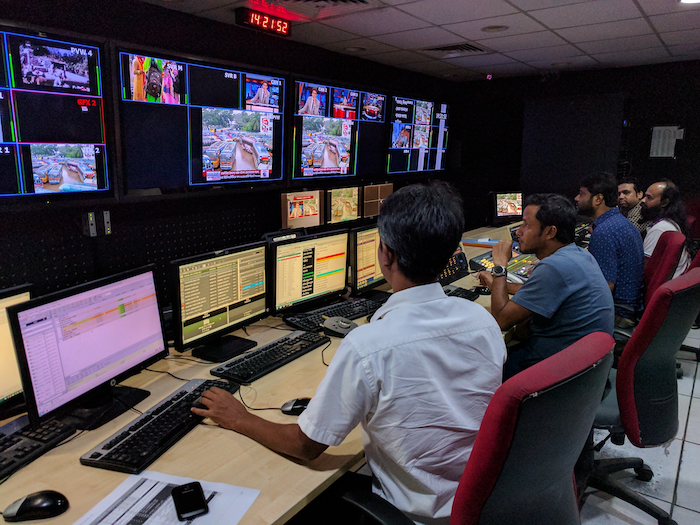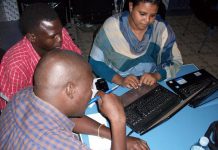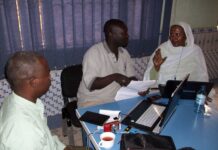
Guidelines for media organisations planning to create new products to inform the audience.
This is the third article in a three-part series about managing a new news project, event or product.
In the first, ‘Project development for a media company‘ and the second ‘The skills of media project management‘ we’ve demonstrated how to develop ideas for new products and how to create them using project management discipline.
These methodologies have been thoroughly tested and proven over time in numerous media houses.
But in the news business you do not always have time for the Gantt chart/whiteboard approach. Stories spring up so quickly you have to be flexible and find other ways of working in a planned and disciplined manner.
In this example, we were asked at short notice to help produce a televised debate between political candidates before a general election. We had three-and-half weeks to make it happen.
The importance and the risk factors were obviously high and we could not afford to spend a week or two planning.
For one thing, we needed to hire a venue and so we had to start checking availability immediately.
But we still needed to think the whole project through before making other commitments, and we decided to use the production schedule as a form of project plan.
The first step was a long meeting of all the key staff. For a show of this sensitivity and high profile, we were glad to have the Director General of the broadcaster at the meeting. This both underlined the importance of the task and gave the DG’s approval for the plan.
But we still needed to think it through before springing into action and we decided to use the production schedule as a form of project plan.
Every television programme should have a production schedule. The difference with this one was that it went into much more detail about what we needed to do to make the show happen.
Essentially it is a vertical version of the Gantt chart/whiteboard but it also identifies all the personnel, and includes all the main operational details.
Candidates debate
Staffing
- Producer/editor
- Deputy producer/editor
- OB (outside broadcast) producer
- Director of photography
- Presenters
- Candidate producers
- Scenography producer
- Graphics producer
- Titles producer
- Audience producer
- Sub-titles producer
- Picture editor
- Control room producer
- Make-up
- Internet content producer
- Floor manager
- Camera operators
- Lighting
- Sound
- Stagehands
- OB truck
Production schedule
TX (transmission) minus 25
- Discuss and plan
- Determine overall editorial remit
- Write brief overview document
TX minus 21
- Venue lined up
- Produce design brief (set, titles, endboard, graphics, captions, internet content)
- Appoint production and OB crews
- Appoint HQ-based staff
- Assign one producer to each candidate
TX minus 18
- Briefings for all producers
- Briefings for OB staff
- Briefings for HQ-based staff
- Candidate producers establish contact with candidates, arrange to meet to discuss plans
- Secure location for recording
- Reconnaissance of location
- Produce promotional schedule for TV, radio and internet
TX minus 14
- Produce technical requirements document (TechReq)
- Invite audience
- Plan titles
- Schedule internet content (web pages and social media)
TX minus 10
- Produce lighting plan
- Produce camera plan
- Define range of shots to be used throughout recording
- Source music for titles
- Record/obtain VT for titles
TX minus 9
- Edit titles and end-board
- Produce graphics
TX minus 8
- Production day off
TX minus 7
- Production day off
TX minus 6
- All-staff meeting to review progress
- Sign off titles and graphics
- Draft script
- OB crew briefing on camera use
- TV and radio promos start be aired
TX minus 5
- Script conference, approve script
TX minus 4
- All-staff meeting, final checks
TX minus 2
- 0900 – Call time for production crew and OB crew, briefing
- 0930 – Build set, dress set, install cameras, lights etc
- 1130 – Technical checks, studio, graphics, scanner etc
- 1200 – Rehearsal
- 1400 – Production and OB crews review
TX minus 1
- 0900 – iron out all remaining problems
TX 0
- 0900 – Call time for production crew and OB crew
- 0930 – Technical check, facilities check
- 1100 – Call time for HQ-based staff
- 1200 – Audience arrives, audience briefing
- 1215 to 1230 – Candidates arrive, greeted by presenter and the relevant producer
- 1230 – Candidates in their dressing rooms, make-up, final brief
- 1300 – Record debate
- 1500 – Record teasers
- 1530 – Edit teasers
- 1600 – Edit programme and insert sub-titles
- 1800 – Take clips for news bulletins
- 1830 – Take clips for internet
- 2000 – (or whenever) Debate transmits
TX plus 1
- Press release on audience figures
- Wash-up meeting to discuss lessons learnt
We circulated the schedule widely and referred to it constantly in the progress chasing. If something slipped (and several things did) we revised the schedule and re-issued it.
In this approach to project planning, you as the project manager need to keep the dependencies in your head – they are not identified so clearly on the schedule.
In the wash-up meeting we identified numerous lessons to be learned. For example, we should have included more operational detail about the arrival, on the day, of the audience and the candidates: they both came in through the same door which made filming the arrival of the candidates (for the opening sequence) problematic.
There were other lessons, too, but they all re-inforced the main point: every significant problem would have been avoided if we had planned in more detail.
Lesson plan for trainers
If you are a trainer of journalists we have a free lesson plan: Project management for journalists which you are welcome to download and adapt for your own purposes.









